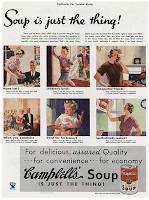 "Punk rock is an anti-establishment rock music genre and movement that emerged in the mid-1970s. Preceded by a variety of protopunk music of the 1960s and early 1970s, punk rock developed between 1974 and 1977 in the United States, the United Kingdom, and Australia, where groups such as the Ramones, Sex Pistols, and The Clash were recognized as the vanguard of a new musical movement. Punk rock bands, issuing the perceived excesses of mainstream 1970s rock, created short, fast, hard music, with stripped-down instrumentation and often political or nihilistic lyrics. The associated punk subculture expresses youthful rebellion, distinctive clothing styles, a variety of anti-authoritarian ideologies, and a DIY (do it yourself) attitude.
"Punk rock is an anti-establishment rock music genre and movement that emerged in the mid-1970s. Preceded by a variety of protopunk music of the 1960s and early 1970s, punk rock developed between 1974 and 1977 in the United States, the United Kingdom, and Australia, where groups such as the Ramones, Sex Pistols, and The Clash were recognized as the vanguard of a new musical movement. Punk rock bands, issuing the perceived excesses of mainstream 1970s rock, created short, fast, hard music, with stripped-down instrumentation and often political or nihilistic lyrics. The associated punk subculture expresses youthful rebellion, distinctive clothing styles, a variety of anti-authoritarian ideologies, and a DIY (do it yourself) attitude. Punk was an aesthetic response to the political and social disasters of the nineteen seventies. It reflected a world of industrial and social antagonism, urban decay and hopelessness, not just through the employment of specific imagery, but through the very methods of cut-up, montage and appropriation it employed, which visually articulated the dislocations in the coming of post-industrial society
Punk was an aesthetic response to the political and social disasters of the nineteen seventies. It reflected a world of industrial and social antagonism, urban decay and hopelessness, not just through the employment of specific imagery, but through the very methods of cut-up, montage and appropriation it employed, which visually articulated the dislocations in the coming of post-industrial society Punk was far more than simply a musical genre, though it produced some of the best pop music ever made (as well as a lot of the worst). It was a fully articulated subculture, with a distinctive visual style involving a bricolage of elements such as fetish clothing, teddy boy gear, ripped and torn items and, unfortunately, nazi uniforms (though these were eschewed fairly early on). It also developed, partly through necessity, a distinctive graphic design style, which found expression in record sleeves, publicity and in 'zines', the xeroxed and collaged publications which were one of the most distinctive developments coming out of punk. The most famous 'zine', 'Sniffin Glue', edited by Mark Perry, was exemplary in its use of roughly put together found material and hand written/drawn graphics; known as deconstructionist graphic design or ‘The New Typography’.
Punk was far more than simply a musical genre, though it produced some of the best pop music ever made (as well as a lot of the worst). It was a fully articulated subculture, with a distinctive visual style involving a bricolage of elements such as fetish clothing, teddy boy gear, ripped and torn items and, unfortunately, nazi uniforms (though these were eschewed fairly early on). It also developed, partly through necessity, a distinctive graphic design style, which found expression in record sleeves, publicity and in 'zines', the xeroxed and collaged publications which were one of the most distinctive developments coming out of punk. The most famous 'zine', 'Sniffin Glue', edited by Mark Perry, was exemplary in its use of roughly put together found material and hand written/drawn graphics; known as deconstructionist graphic design or ‘The New Typography’.

Jamie Reid's graphics for the Sex Pistols' record covers and publicity material also employed similar techniques to great effect. His famous collage of the Queen with a safety pin through her nose for the cover of the Pistols' controversial single 'God Save the Queen' is now recognised as a classic piece of design. While designer Jamie Reid developed a style for record sleeves and posters that evoked Situationist graphics, and the cut-up techniques of William Burroughs and others. Other punk graphics referred or were reminiscent of Dada, Constructivism, Bauhaus or Futurism.

 www.chart.ac.uk/chart2000/papers/noframes/gere.html
www.chart.ac.uk/chart2000/papers/noframes/gere.html









































 1
1  2
2  3
3 4
4 5
5  6
6 7
7  8
8 9
9  10
10 11
11  12
12
 14
14 15
15  16
16 17
17  18
18 19 (should be red)
19 (should be red)  20
20 21
21  22
22  23
23 24
24